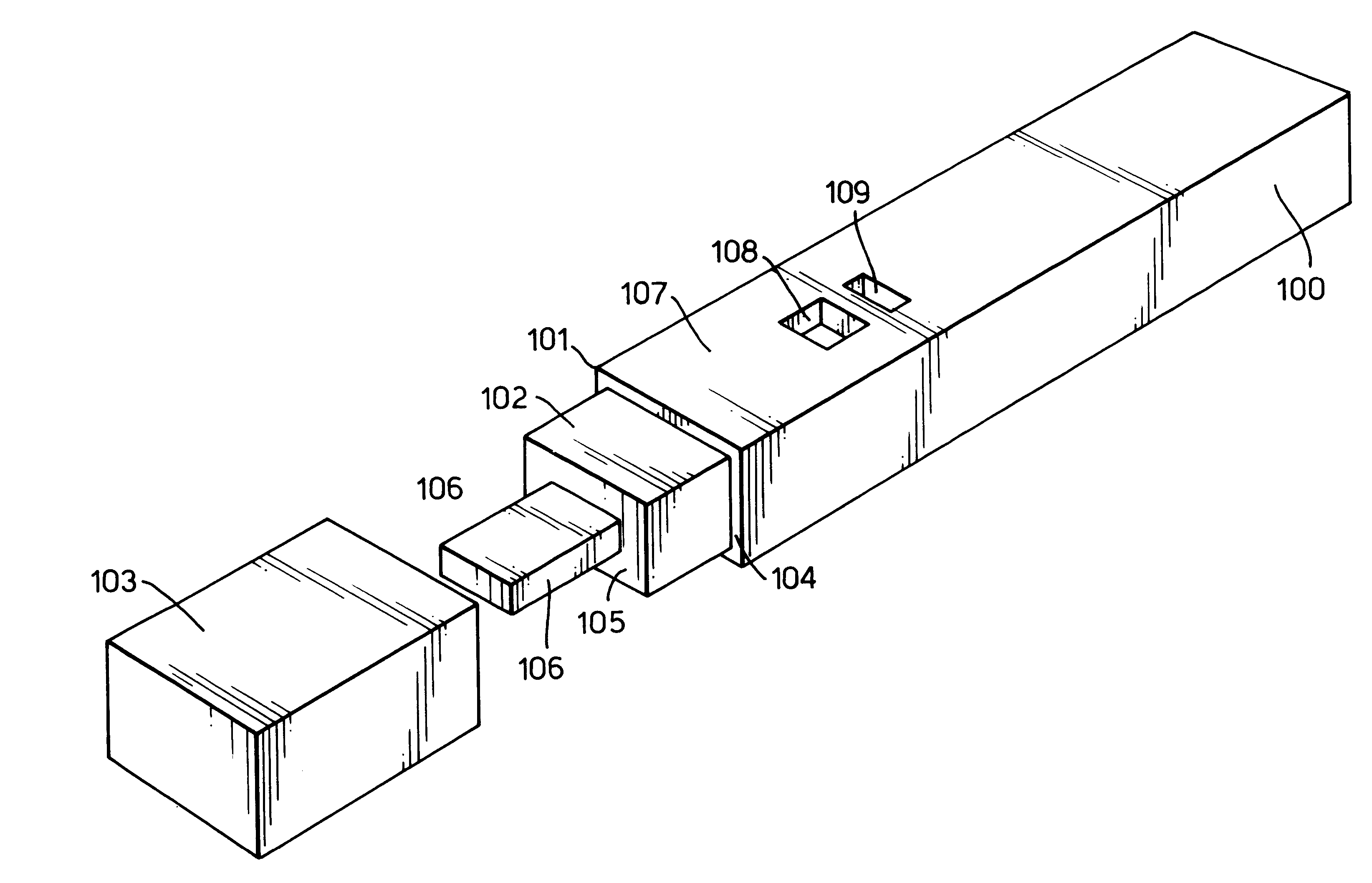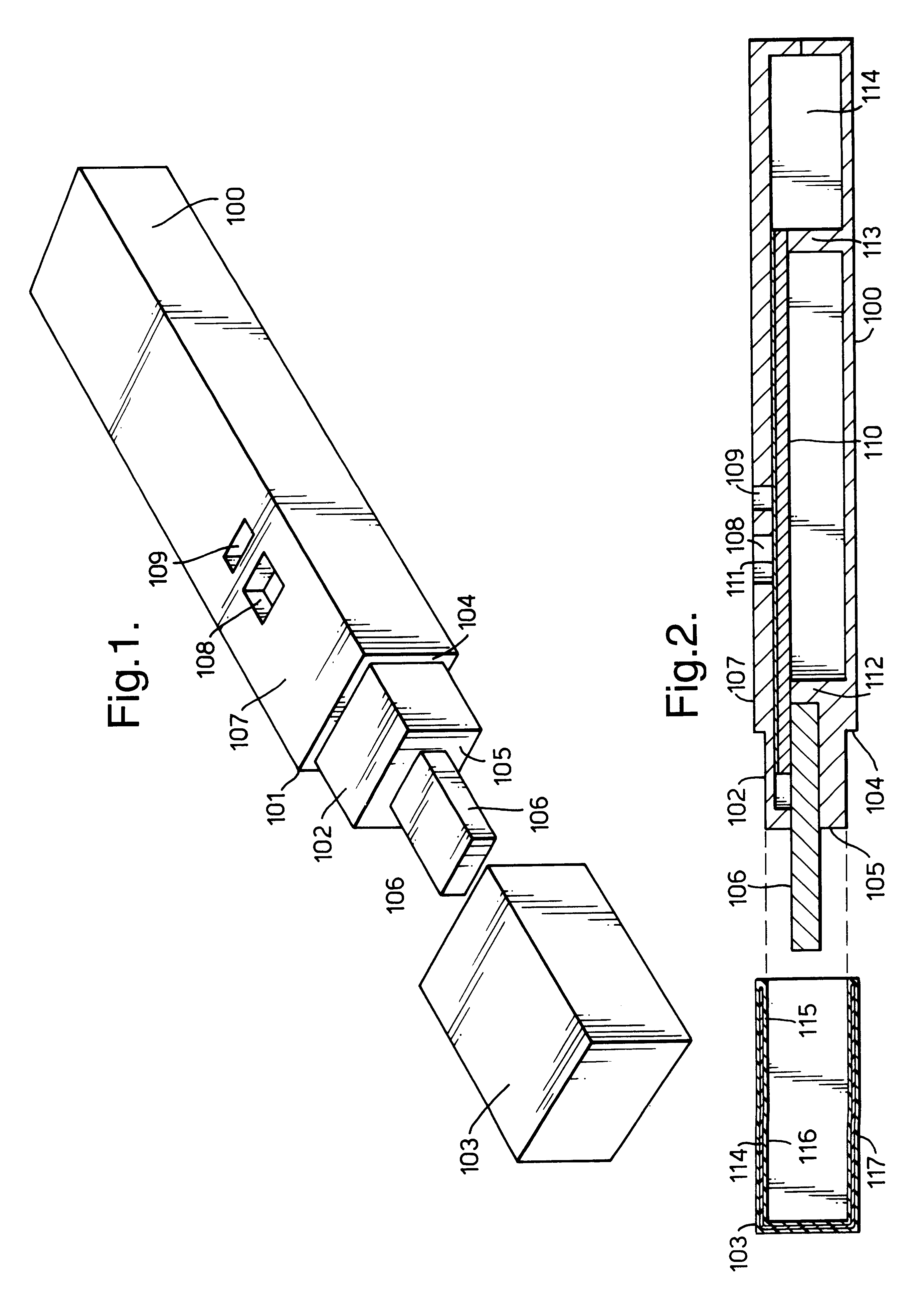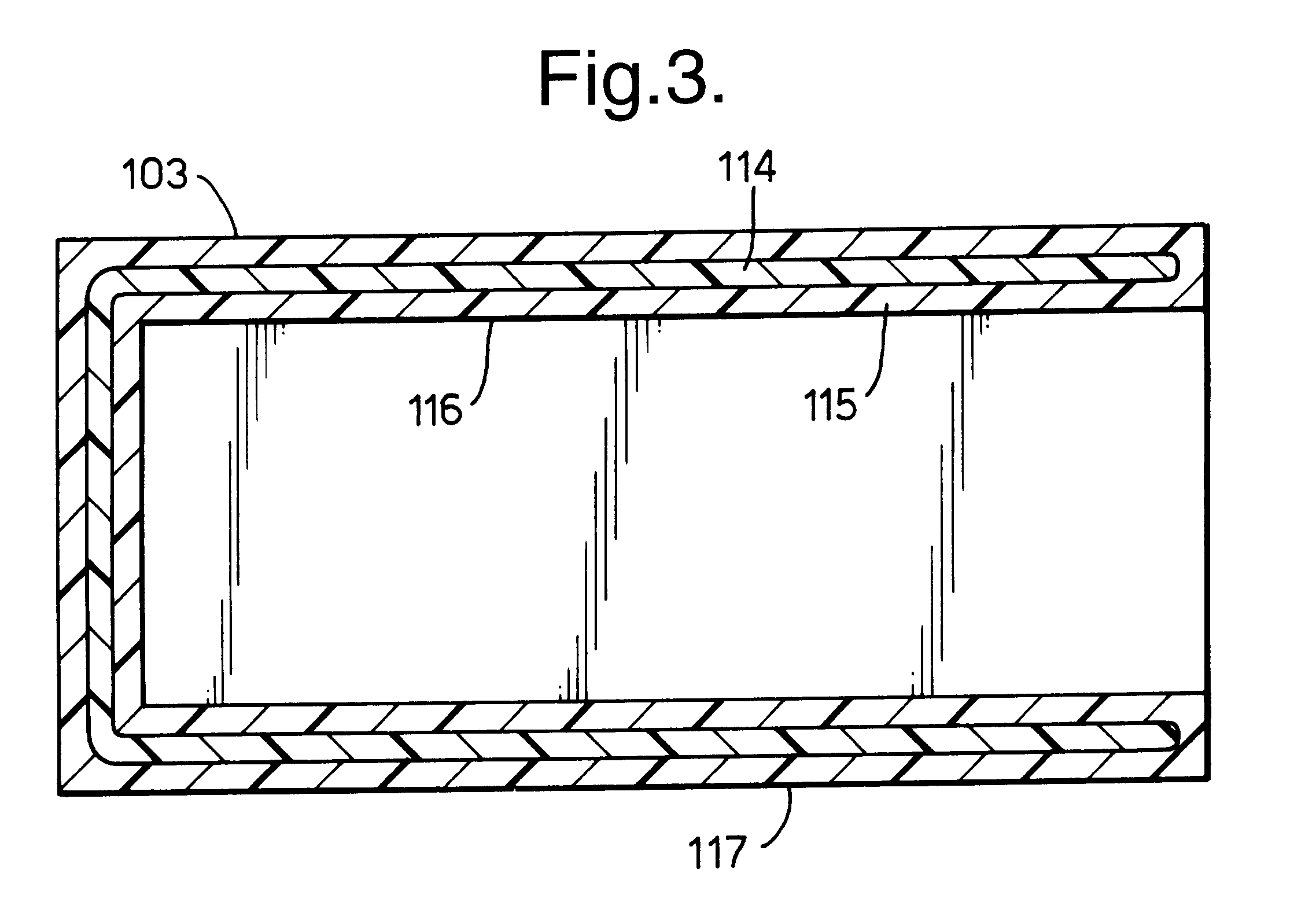Assay devices
- Summary
- Abstract
- Description
- Claims
- Application Information
AI Technical Summary
Benefits of technology
Problems solved by technology
Method used
Image
Examples
example
The following example demonstrates that a desiccant-containing plastics material can be used in accordance with the invention to impart effective storage stability on an assay device. In this instance the test wss for urinary luteinising hormone (LH), and the test device was based on a sandwich immunoassay format conducted on a porous nitrocellulose strip within a polystyrene casing, using a mobile particle-labelled (blue-coloured latex) monoclonal antibody specific against LH, and an immobilised anti-LH monoclonal antibody in a detection zone on the strip. The test was conducted by dipping each device in standard LH-containing urine, and evaluated the assay result after 5 minutes. The relative accumulation of coloured latex in the detection zone was proportional to the urinary LH concentration. The result was determined in arbitrary units by optical transmission using red light, extinction of light transmission being assessed by comparison with a portion of the strip adjacent the d...
PUM
 Login to View More
Login to View More Abstract
Description
Claims
Application Information
 Login to View More
Login to View More - R&D
- Intellectual Property
- Life Sciences
- Materials
- Tech Scout
- Unparalleled Data Quality
- Higher Quality Content
- 60% Fewer Hallucinations
Browse by: Latest US Patents, China's latest patents, Technical Efficacy Thesaurus, Application Domain, Technology Topic, Popular Technical Reports.
© 2025 PatSnap. All rights reserved.Legal|Privacy policy|Modern Slavery Act Transparency Statement|Sitemap|About US| Contact US: help@patsnap.com



